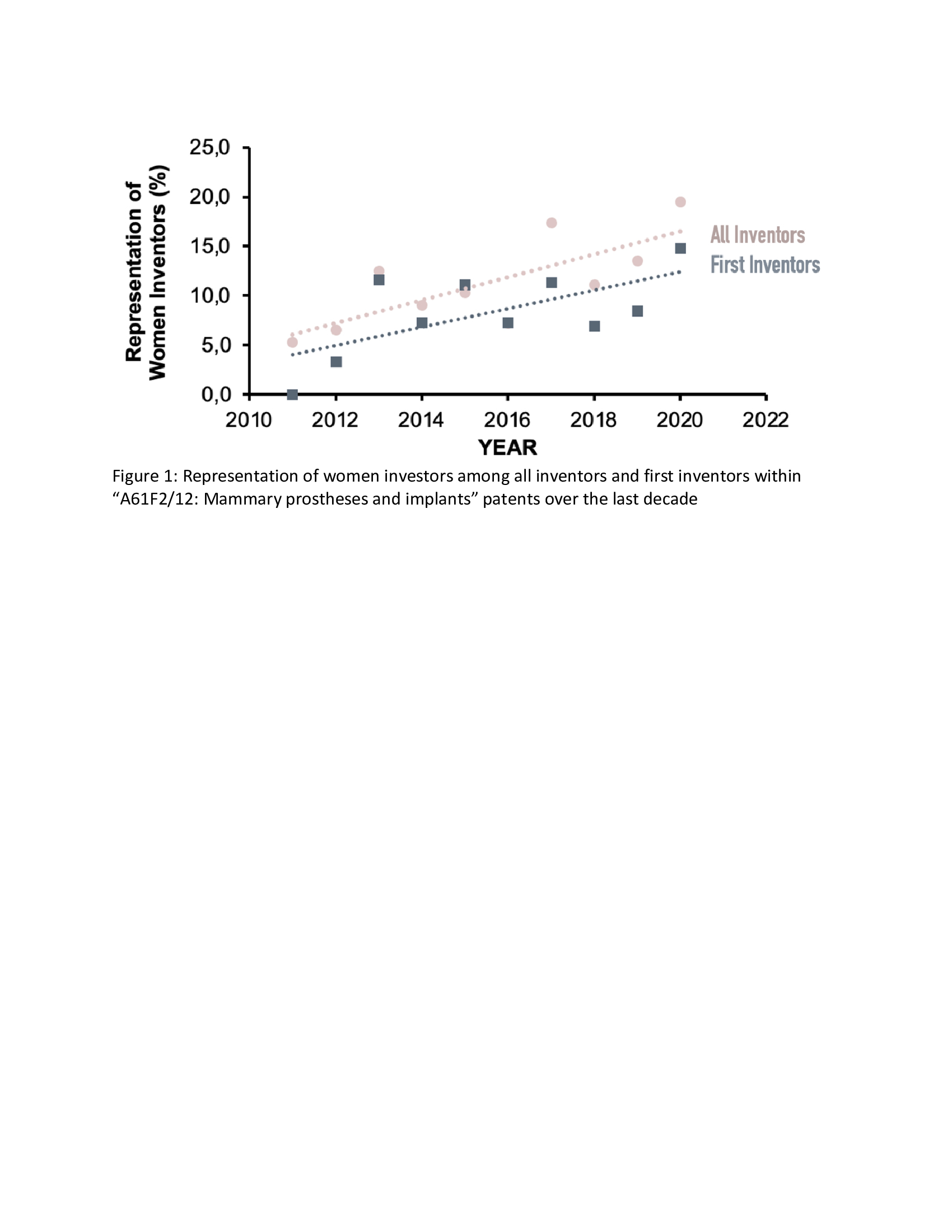Women in Plastic Surgery Innovation: A 10-year Review of Gender Representation in Mammary Device Patents
Helen Xun1, Jose A. Foppiani1, Valeria Bustos1, Lauren Valentine*1, Allan Weidman1, Angelica Hernandez Alvarez1, JacqueLyn Kinney1, Miroslava Verbat2, Ashley Boustany1, Bernard T. Lee1, Samuel Lin1
1Plastic and Reconstructive Surgery, Beth Israel Deaconess Medical Center, Boston, MA; 2First Medical Faculty, Prague, Czechia
Plastic surgery is a specialty driven by innovation. In one large academic center, despite a 44% representation of women university faculty, only 11% of startups and 27% of issued patents were by women. The purpose of this study is to characterize representation of women in surgical innovations in breast surgery devices.
Patents under the "A61F2/12: Mammary prostheses and implants"ť classification between 2011-2020 were identified using Google Patents Advanced. Inclusion criteria included patents (not designs) in English, applications (not grants), with no litigation limitations. Data collected included ID, title, assignee (categorized as industry, academic, private, individual), inventors, and dates (priority, filing, and publication). Gender of inventors were identified with the literature validated Gender API, with manual resolution of unresolved genders or with ga_accuracy scores of <75%. Data was analyzed using two-tailed Student's t tests, chi square analysis, and Pearson correlation coefficient.
A total of 374 unique patents were included for analysis. There was a significant increase in patents over the decade (from 15 in 2011 to 88 in 2020, R2=0.74, P<0.05), with a decrease in number of inventors per patent (R2=0.12, P<0.05). Of the 1,102 total inventors, 138 were female (11.2%), with a four-fold increase in representation over the decade (R2=0.58, P<0.05), including increase in patents filed with a woman first inventor (0% to 14.8%). Women were equally likely to be first three inventors versus middle to last inventors (12.8% vs 11.1% respectively).
Over the last decade, innovation in breast surgery has significantly increased. Representation of women inventors has also significantly improved, however remains disproportionate compared to women representation in residency and practice (10.3% versus 42% and 16%, respectively). Progressive interventions should target representation of women inventors to reflect ratios in training such as institutional environment optimization, reduction in gender segmentation in education, and funding opportunities.
Back to 2023 Abstracts


